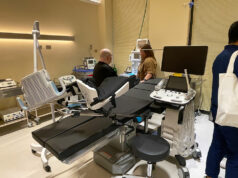AN INCREASING number of Filipinos are joining triathlons — which are also multiplying across the country. Still, these difficult multi-event races can be intimidating for newcomers.
“Triathlon is an endurance sport, which requires high fitness level and extensive training. Athletes also need to have adequate knowledge of triathlon’s core sports, which are swimming, cycling and running. Of course, the training should be complemented with healthy diet and regular exercise,” says Dr. Nicky Montoya, president of MediCard Philippines.
Here some tips from MediCard for those who are planning on joining a triathlon:
SWIMMING
• Know the right swimming techniques.
Triathlons begin with a race in open water, which can get chaotic without a roped-off lane line to follow and having swimmers in close proximity to each other. To dispel the anxiety that may arise from such a situation, swimmers are advised to improve their breathing techniques. Swimming skills, like hand entry, freestyle, sighting, and drafting can also help them move swiftly and get ahead of other challengers.
• Be familiar with open water. The open water environment can be unpredictable. It may be too deep or too cold, which can be challenging for those who are used to swimming in a pool. To familiarize themselves with this environment, swimmers should practice swimming in the open water especially during race season.
• Get used to wearing a wetsuit. Swimmers who are not used to wearing a wetsuit may feel their arms and shoulders getting heavier, find their strokes constrained and feel more buoyant. Training in a wetsuit can help triathletes adapt to these discomforts.
CYCLING
• Master the bike mechanics. Cycling mastery does not only help triathletes race faster without spending too much energy; it can also help them avoid fatigue and injury. Important biking techniques to master include accurate pedal strokes including circular strokes, cadence, proper shifting of gears, and body positioning. Good body position relaxes the upper body, which allows more oxygen to be used by the leg muscles.
• Practice scenarios similar to those on race day. Biking the race course before the event day can help athletes familiarize themselves with the terrain and provide them with insights on the best cycling workouts that match the race conditions. Triathletes are also advised to practice cycling with all their gear on to get used to their equipment.
RUNNING
• Do brick sessions regularly. A brick session means running immediately after cycling. Running, which comes after the cycling leg of the race, is often considered as the most challenging part in a triathlon because of reduced leg muscle power and blood shunting, when the body needs time for the blood to be redistributed from the muscles used for cycling to the muscles required for running. To help the body adapt to the biking-running transition smoothly, triathletes are advised to do brick sessions regularly (once or twice a week).
• Practice negative splitting. Negative splitting means completing the second half of a race faster than the first half. Studies reveal that this strategy improves overall triathlon performance by helping the athletes conserve energy and speed up near the end of the race. Negative splitting takes practice and discipline and becomes a more effective tool as athletes gain more racing experience.



